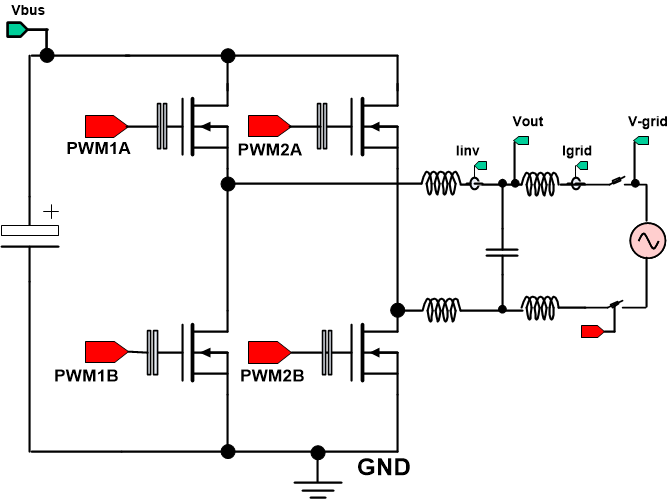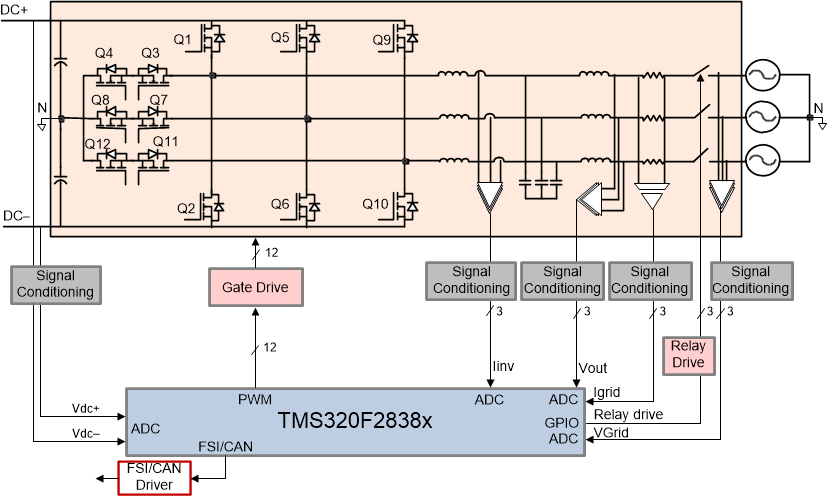SPRACR6 April 2020 F29H850TU , F29H859TU-Q1 , TMS320F280023-Q1 , TMS320F280023C , TMS320F280025C , TMS320F280025C-Q1 , TMS320F280041-Q1 , TMS320F280041C , TMS320F280041C-Q1 , TMS320F280048-Q1 , TMS320F280048C-Q1 , TMS320F280049-Q1 , TMS320F280049C , TMS320F280049C-Q1 , TMS320F28384D , TMS320F28384D-Q1 , TMS320F28384S , TMS320F28384S-Q1 , TMS320F28386D , TMS320F28386D-Q1 , TMS320F28386S , TMS320F28386S-Q1 , TMS320F28388D , TMS320F28388S , TMS320F28P650DH , TMS320F28P650DK , TMS320F28P650SH , TMS320F28P650SK , TMS320F28P659DH-Q1 , TMS320F28P659DK-Q1 , TMS320F28P659SH-Q1
3.2 DC/AC Inverter Stage
This section shows two examples of DC/AC inverter topologies used in solar string inverter application. As shown in Figure 10, a single phase two-level DC/AC inverter comprises of a full bridge with four switches, followed by an output filter stage. An inductor capacitor (LCL) output filter is shown in the diagram. To regulate the current feeds into the grid, the C2000 MCU senses the voltages and current signals as indicated in the diagram and then runs the control algorithm to compute the PWM duty ratio for the four switches.
 Figure 10. Single Phase DC/AC Topology Used in Solar String Inverter
Figure 10. Single Phase DC/AC Topology Used in Solar String Inverter For this kind of inverter each switching device blocks the full DC link voltage Vbus. Therefore for higher power output when the DC link voltage is pushed higher it puts an upper limit because of the switching device blocking voltage rating. Additionally higher DC link voltage means increased switching losses in the traditional MOSFET resulting in decreased efficiency. Because of these limitations at higher power two-level inverters are replaced by three-level inverters.
 Figure 11. Three Phase 3-Level DC/AC Inverter Control Using F2838x MCU
Figure 11. Three Phase 3-Level DC/AC Inverter Control Using F2838x MCU One such three-level topology and its interface to C2000 MCU is shown in Figure 11. The controller used in this case is the TMS320F2838x series MCU. This figure shows a T-type three phase three-level inverter. Two back-to-back switching devices are inserted between the switch nodes and the neutral point of the DC link created by the bulk input capacitors. These two switching devices are placed in a common emitter configuration so that current flow can be controlled by controlling (on/off) one of the two switching devices. Here again, F2838x MCU senses the voltage and current signals as indicated in the diagram, runs the current control algorithm and finally computes the PWM duty ratio for all inverter switches.